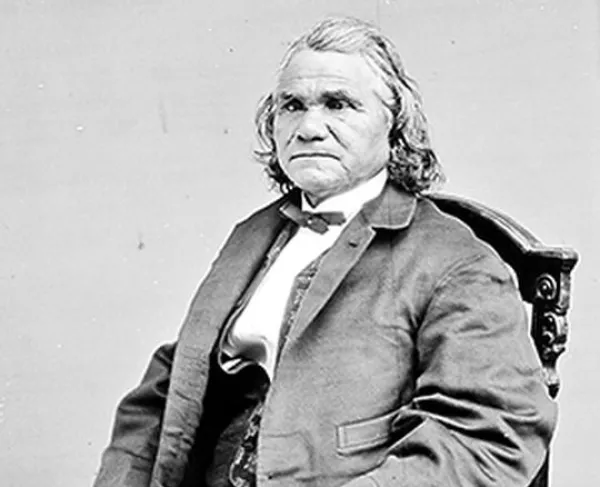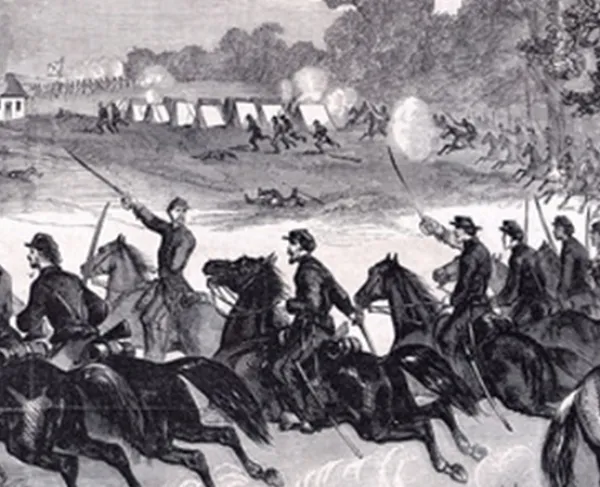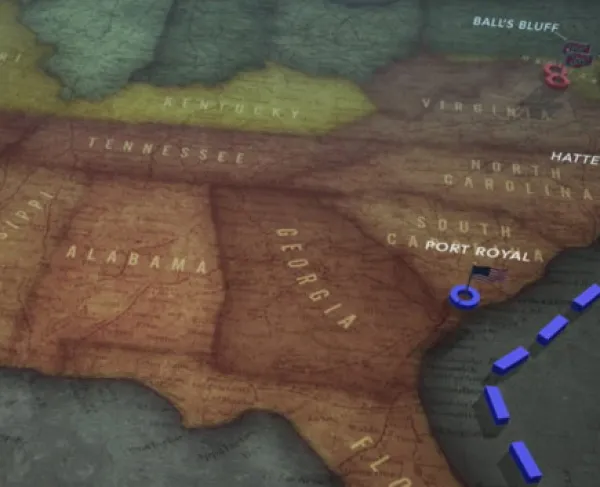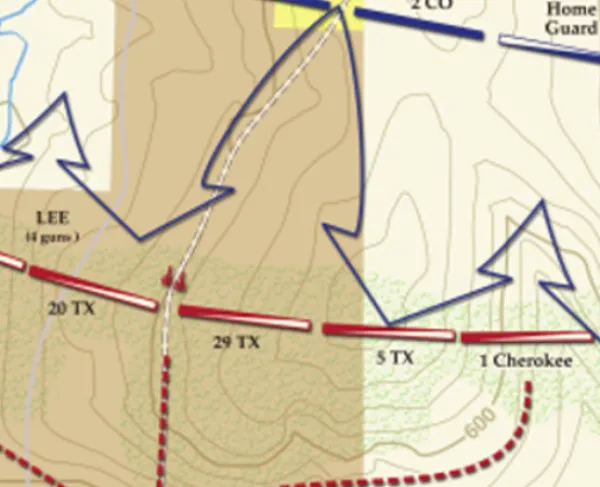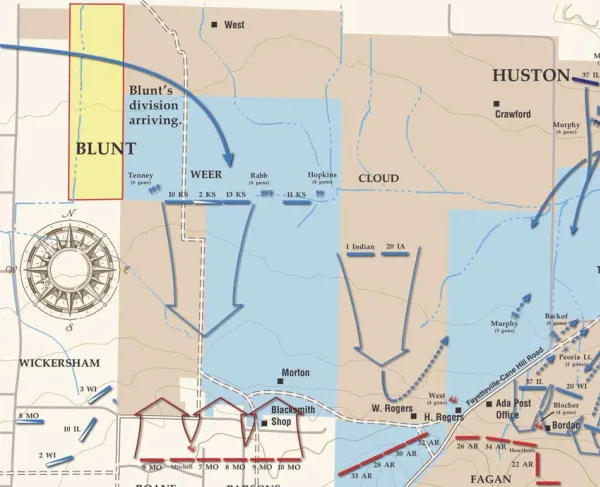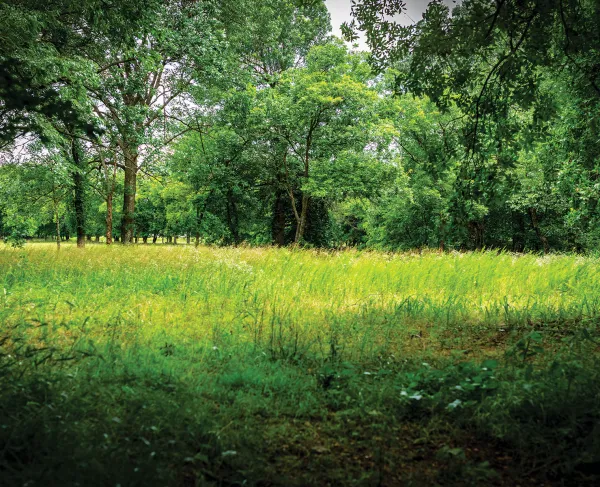
Cabin Creek
Mayes County, OK | Jul 1 - 2, 1863
As Col. James M. Williams led a Union supply train from Fort Scott, Kansas, to Fort Gibson in Indian Territory, current-day Oklahoma, he skirmished with Confederate Cherokee Indian Col. Stand Watie and his forces at Cabin Creek from July 1- 2, 1863. The Battle of Cabin Creek was the first time that African American soldiers, the 1st Kansas Colored Infantry, fought alongside white troops.
How It Ended
Union Victory. With information from captured Confederate soldiers, Col. James. M. Williams knew that Cherokee Indian Col. Stand Watie and his forces were preparing to attack. When Watie attacked Cabin Creek, Williams drove the Confederates off with artillery fire and two cavalry charges. The Union supply column continued to Fort Gibson, in current-day Oklahoma.
In Context
In early July 1863, Colonel James M. Williams led a Union supply train escorted by a handful of infantry and cavalry regiments on the Texas Road from Fort Scott, Kansas, to Fort Gibson in Indian Territory, current-day Oklahoma. Williams' force included the Third Indian Home Guard, units from Colorado, Kansas, and Wisconsin, and his own unit, the 1st Kansas Colored Infantry. It was one of the first battles in which African-Americans fought as a unit west of the Mississippi River, and the battle was the first in which African-American troops fought side-by-side with their white and Indian comrades. The land fought over was occupied by the residence and ranch building of prominent Cherokee Joseph Lynch "Greenbriar Joe" Martin.
As Col. James M. Williams approached the crossing of Cabin Creek, he learned from captured Rebel soldiers that Confederate Cherokee Indian Col. Stand Watie intended to attack him near Cabin Creek. When Williams and his Union supply line reached the river, it was too high to cross, but when the river receded, Williams and his troops attacked.
0
1,700
Williams’ troops drove the Confederate troops off with artillery fire and two cavalry charges. Watie's Confederates fell back and fled the battlefield.
23
65
After the Union victory at the First Battle of Cabin Creek, Col. James M. Williams and his supply train continued to Fort Gibson in current-day Oklahoma. The increased troops and extra supplies at Fort Gibson allowed the Union to maintain their presence in Indian territory and gave them superior firepower during the Battle of Honey Springs on July 17, 1863, and the troops needed to capture Fort Smith in Arkansas at the Battle of Devil's Backbone on September 1, 1863. The Second Battle of Cabin Creek occurred on September 19, 1864, when Stand Watie once again attacked Union supplies on route to Fort Gibson. During that battle, Watie successfully captured the supplies.
The Five Civilized Tribes, including the Cherokee, had lived in the Indian Territory, now the state of Oklahoma, ever since their removal from ancestral homelands in the southeastern states a quarter-century before the Civil War. During the Civil War, Native-American tribes fought for both sides; however, many in the Cherokee nation sided with the Confederacy because many operated large plantations with African-American slave labor. Confederate Brigadier General Albert Pike negotiated treaties between all five tribes and the government in Richmond. He authorized the creation of regiments for home defense, with treaty stipulations that these Indian soldiers were not required to leave the Territory. Seeing no alternative, the minority pro-Union faction among the Cherokees ultimately decided to cooperate with Pike. The Unionists organized Colonel John Drew's 1st Cherokee Mounted Rifles, while pro-Confederates organized Colonel Stand Watie's 2nd Cherokee Mounted Rifles. With the 1st Choctaw and Chickasaw Mounted Rifles, and the 1st Creek Regiment, Pike had a sizable force of Indian troops by early 1862.
Cabin Creek: Featured Resources
All battles of the Operations to Control Indian Territory Campaign
Related Battles
0
1,700
23
65
